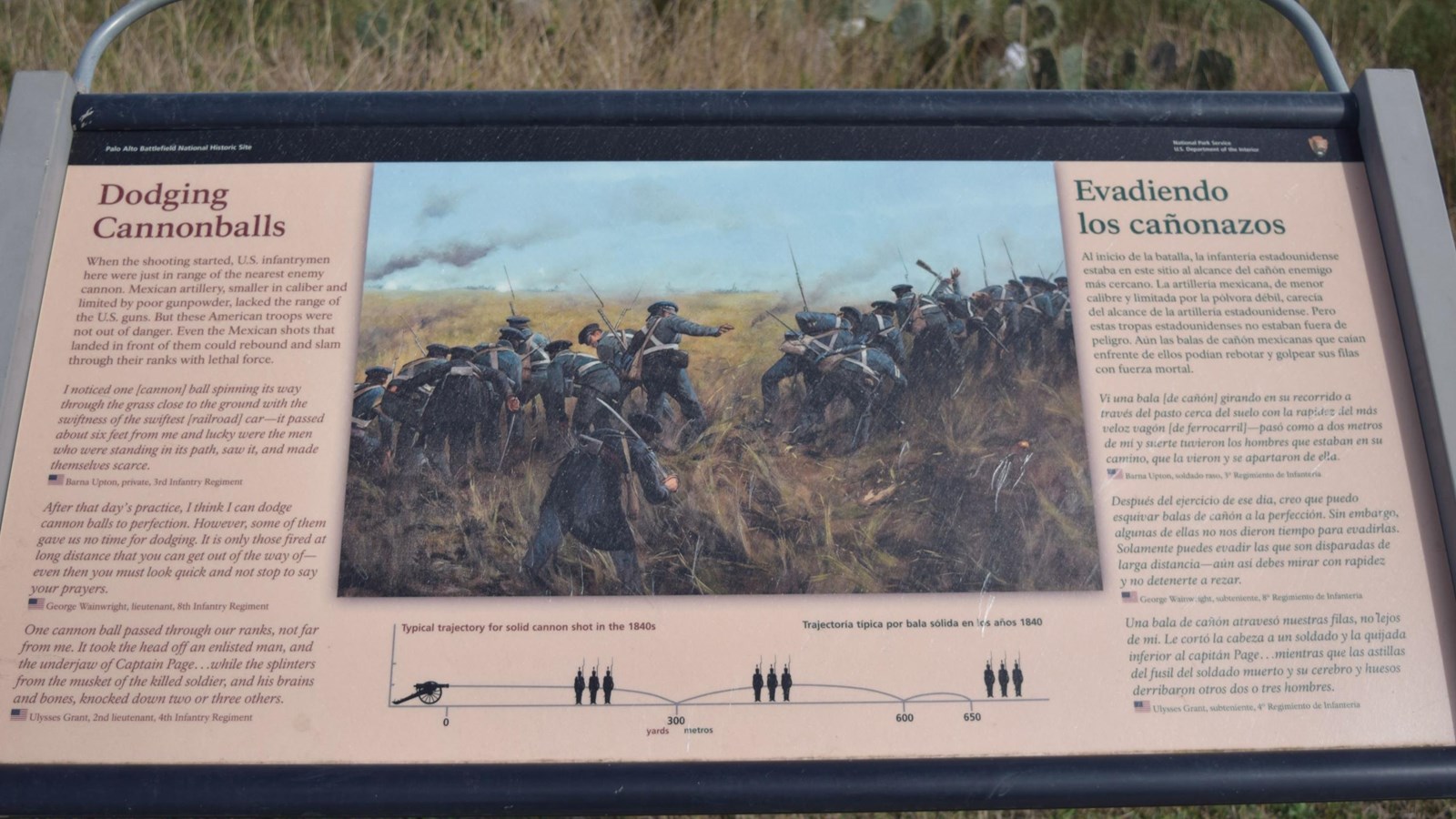Last updated: April 23, 2025
Place
Dodging Cannonballs Wayside

NPS Photo
Main Text
When the shooting started, U.S. infantrymen here were just in range of the nearest enemy cannon. Mexican artillery, smaller in caliber and limited by poor gunpowder, lacked the range of the U.S. guns. But these American troops were not out of danger. Even the Mexican shots that landed in front of them could rebound and slam through their ranks with lethal force.
Quote Text
I noticed one (cannon) ball spinning its way through the grass close to the ground with the swiftness of the swiftest (railroad] car—it passed about six feet from me and lucky were the men who were standing in its path, saw it, and made themselves scarce. ~ Barna Upton, private, 3rd Infantry Regiment
After that day's practice, I think I can dodge cannon balls to perfection. However, some of them gave us no time for dodging. It is only those fired at long distance that you can get out of the way of— even then you must look quick and not stop to say your prayers. ~ George Wainwright, lieutenant, 8th Infantry Regiment
One cannon ball passed through our ranks, not far from me. It took the head off an enlisted man, and the underjaw of Captain Page...while the splinters from the musket of the killed soldier, and his brains and bones, knocked down two or three others. ~ Ulysses Grant, 2nd lieutenant, 4th Infantry Regiment
Image Descriptions
Center
Historical depiction of U.S. infantrymen crouching to avoid Mexican cannonballs.
Center Bottom
Infographic depicting the typical trajectory and distance for solid cannonballs in the 1840s.
